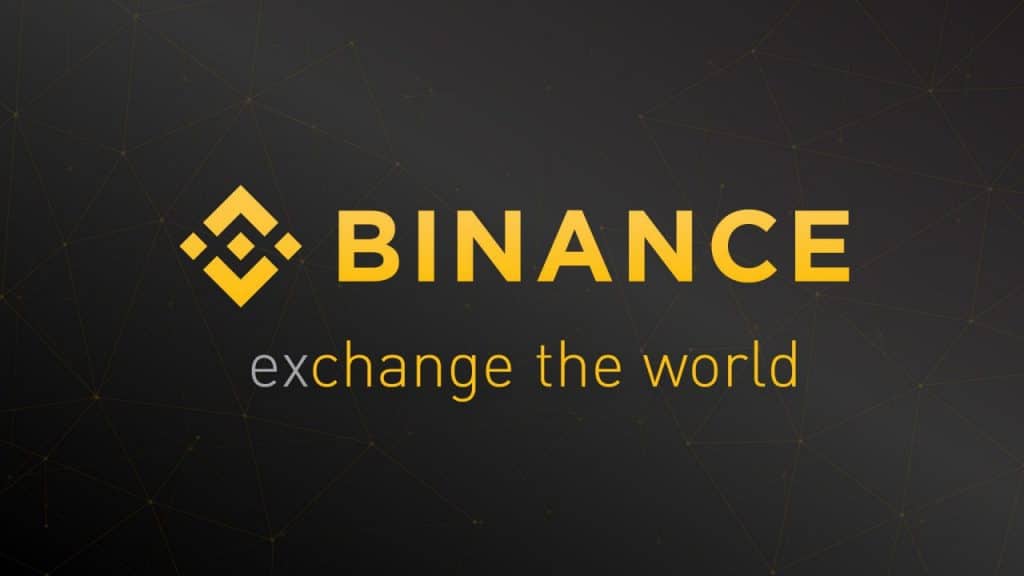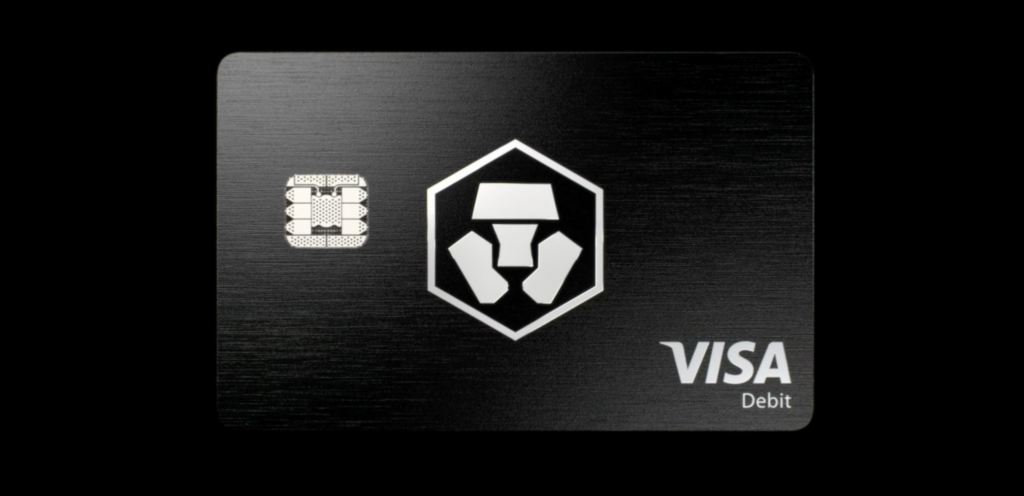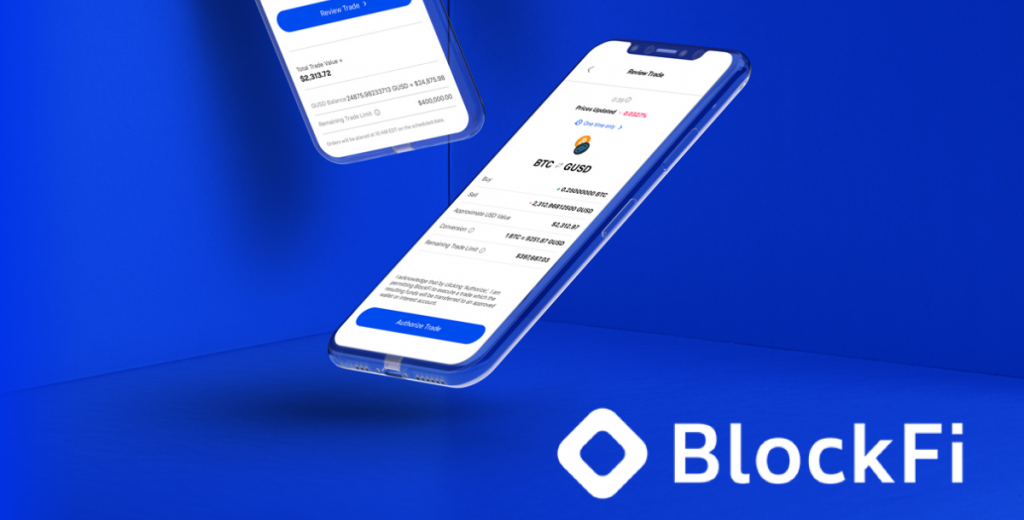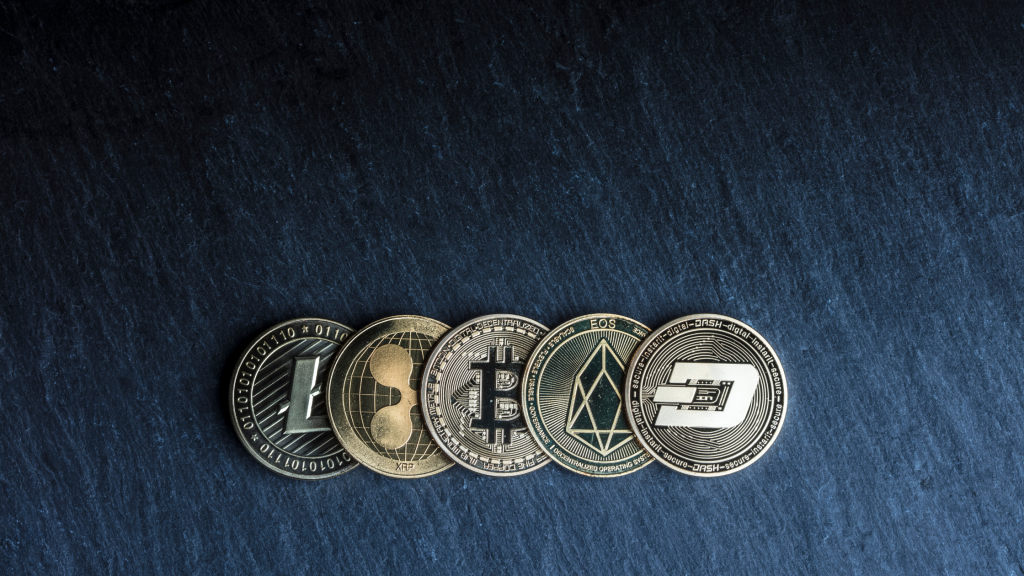Binance is one of the leading cryptocurrency exchanges in the crypto industry. Developer Changpeng Zhao founded the company in 2017. Zhao’s company Beijie Technology held a successful ICO that raised $15 million to launch the trading platform. The investors in the ICO received Binance Coin (BNB). Since the launch, the company has grown rapidly attracting users across the world. Currently, CoinMarketCap ranks Binance as the largest crypto exchange in terms of trade volume, liquidity, and traffic. So let’s discuss and answer the questions “is binance safe to store crypto?”.
About Binance
Binance exchange supports approximately 500 digital coins and 50 fiat currencies. Additionally, it offers one of the most competitive rates. The platform also provides an ease-of-use interface, suitable for both seasoned and beginner traders. The platform has more than 28.5 million users around the world.
Binance Products
The rapid rise of Binance during the few years it has been in existence has not been smooth all through. With the quickly changing crypto environment, government regulations remain several years behind the cutting edge. Therefore, the result has often been conflicts between the crypto industry and various governments and regulatory authorities. Such was the case for Binance, which came into conflict with regulations of some countries including the United States.
The unfavorable regulatory environment in the United States significantly affected Binance’s business in the country. Some regulators believed that some of the digital currency assets that the platform supported for trade were essentially securities. Security is a financial product such as bonds, stocks, and some derivatives such as futures. Businesses require extensive licensing to offer security-trading services. In response to the U.S. regulations, Binance created a separate exchange that suites the U.S. regulation and called it Binance US.
Binance Trustability
Binance is one of the most trusted exchange platforms in the crypto industry. The platform has been operating for five years, therefore, has passed the test of reliability due to its seniority.
Binance has also recorded steady and impressive growth in user base since its launch five years ago. Towards the end of 2017, the platform had over 1.5 million users. This number increased significantly in the following year with the platform reporting 13.3 million users. In 2019, the total number of Binance users reached 16.5 million. The statistics increased to 21.5 million users in 2020 before hitting 28.6 million users in 2021.
According to research by Binance, the trading platform is the main source of income to more than 15% of the total users. More than 48% of users are hobbyists.
Binance is by far the largest cryptocurrency exchange by trading volume. The company recorded a peak trading volume of $3 billion in 2017. Since then, the graph has generally been on an uptrend. In 2018, the trading platform recorded a $19 billion trading volume. However, there was a slight slump, and Binance reported a $15 billion in trade volume in 2019. Nonetheless, the trading platform bounced back in 2020, hitting $35 billion. In 2020, the number stood at $76 billion.
Additionally, Binance exchange has a significant market share of $21.76 billion in trade volume. The exchange’s digital token, Binance Coin (BNB), ranks fourth in exchange ranking with a $63.6 billion market cap.
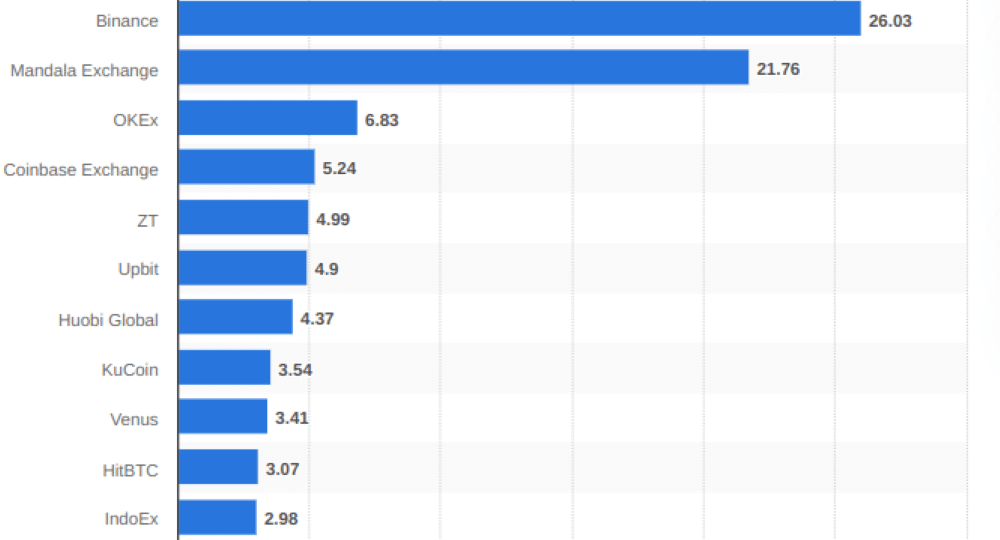
The crypto trading platform has also recorded an impressive increase in the trade volume during the period of its existence. In 2017, the company recorded a $59 billion annual exchange volume. The number increased almost tenfold in the following with Binance recording $515 billion. In 2019, the exchange saw a little drop in 2019 to $401 billion, following the regulatory challenges the company was facing. The number more than doubled in the following year, reporting a $1.07 trillion in trade volume. In 2021, the trade volume went up to $7.7 trillion.
Binance generates its revenue from trading fees, interest on loans, spreads, fees from its broker program, interchange fees, cloud products, investment earning, and mining services.
Founders and Team
Binance exchange’s founder and CEO Changpeng Zhao have a long history of working with asset trading solutions. In 2005, he founded Fusion System, a company that built high-frequency trading for stockbrokers, in Shanghai. In 2013, Zhao joined Blockchain.info and became the third member of the cryptocurrency wallet’s team. He was also a CTO at OKCoin, a platform supporting spot trading between fiat and digital assets.
Zhao founded Binance in China. The company headquarters was later moved from China to Japan due to the crypto ban by the Chinese government.

As of 2018, Zhao had grown Binance into the largest crypto exchange in market capitalization, surpassing the competitors such as Coinbase. In the same year, Zhao featured in Forbes Magazine’s list of “The Richest People in Cryptocurrency.” Zhao’s net worth is estimated at $96 billion in 2022. Other members of the key executive include the Co-founder and CMO He Yi, the Vice President of Mergers and acquisitions Ling Zhang, Chief Operating Officer David Perez, CEO Binance Singapore Richard Teng, and other directors.
Hack History
In May 2019, Binance experienced a large-scale security breach, where hackers stole 7,000 Bitcoins (translating to about $40 million). The hackers used multiple techniques including phishing and other virus attacks to target high-net-worth accounts, which store their Bitcoin in a hot wallet. They used multiple independent accounts to attack the exchange at the most opportune time. The attackers structured the illegal transactions in a way that they passed the platform’s security checks.
In addition to stealing the funds, the hackers managed to get some useful information such as a two-factor authentication code for logging into a Binance account. However, the company covered all the losses from that incident, through its insurance plan.
The Risk of Using Binance Exchange
Trading platforms face risks associated with the nature of their design as well as the type of assets they are dealing with (cryptocurrency). Binance is not immune to such risks.
First, the platform risks cybersecurity attacks. Binance provides custodial crypto wallet services. Its hot wallets are connected to the internet, which makes them a suitable target for cyber attackers. Additionally, users’ data that the company holds may get into the wrong hands.
Secondly, Binance faces cryptocurrency risks. The exchange platform is dealing with crypto hence always at the mercy of government regulations for the crypto industry. Currently, some countries still hold strict regulations against crypto trading and use. However, other countries have more relaxed policies. The regulatory environment keeps changing, and some regulations may soon set in, which may have a huge impact on investors.
Finally, the cryptocurrency asset remains volatile. You can buy assets today, and they could drop in value drastically.
Binance Key Security Features
Binance employs multiple security features to ensure users’ funds and data are safe.
Identity Verification
Binance is in full compliance with know-your-customer policies (KYC). Furthermore, KYC helps the company to ensure users’ security and safety. It also helps the company to keep bad actors away from the platform. Currently, the company requires current and new Binance users in the EEA and UK to complete a new KYC flow. The latest KYC upgrade requirement includes advanced Document verification, address verification, and ‘Liveness’ checks. With these upgrades, Binance will become the first cryptocurrency exchange to be fully compliant with the requirements of both 5AMLD and 6AMLD (Anti-Money Laundering Directive). The exchange will reward users who will complete the new KYC process by Q1 2022.
The company keeps up with the changing regulatory compliance frameworks, adapting to new technology innovations for protecting consumers.
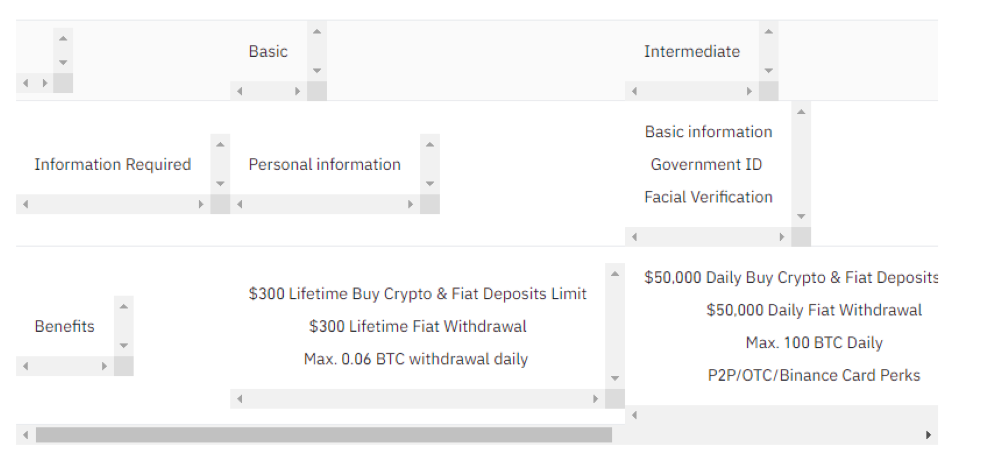
Two-factor Authentication (2FA)
Binance encourages its users to activate 2FA as a good security practice. 2FA is an authentication mechanism to double-check user’s identity is legitimate. Usually, when signing into your account, you authenticate with a username and a password – that is the first verification layer. 2FA works as an extra step in the authentication process.
Having a second form of identification significantly reduces the chance of a hacker accessing sensitive information. It also prevents identity theft, which may damage the reputation of both the user and the company. The authentication can be through SMS and Google authenticator.
Cold storage
Binance holds a large portion of the funds in cold storage. They leave the remaining small portion in hot storage to help run the exchange. In addition, Binance DEX provides an alternative for users who want to keep their funds in a decentralized platform. Binance DEX is a trading platform that allows users to take full control of their private keys. It allows users to trade directly from their cold storage device (hardware wallets).
Insurance
Binance established the Secure Asset Fund for Users (SAFU), an emergency insurance fund, to protect users’ funds. Binance has been allocating 10% of all trading fees to grow SAFU into a sizable level to cover users’ assets. As of January 29, 2022, the size of this insurance cover is valued at $1 billion. The company will continue monitoring the size of the insurance funds to ensure it remains adequate to protect users’ interest.
Other Security Measures
Binance uses real-time motoring by analyzing every withdrawal attempt, 2FA reset, password reset, and email address change. If the team detects any suspicious activity, they suspend withdrawals for a minimum of 24 to 48 hours.
The exchange also implements organizational security to ensure the safety and integrity of users’ funds. The platform’s wallet and personnel infrastructure feature advanced security measures such as multi-signature and threshold signature schemes (TSS).
Binance also uses advanced data encryption to protect user data and personal information such as KYC information. Meanwhile, the platform secures data in transit through end-to-end encryption to ensure only users can access their personal information.
Partnership with Regulators and Third Parties
Binance works closely with regulatory authorities to develop a clear regulatory framework, guidelines, and standards. In June 2020, the company launched Binance UK, an FCA-regulated affiliate that meets the need of the UK and European investors. The affiliate platform Binance U.S. is also in compliance with regulations in the United States.
In regions where regulations are still under development, Binance strives to set proactive initiatives to protect its users according to the international regulatory standards.
Binance also invests in partnership with cutting-compliance technologies providers to meet and even exceed global regulations. Compliance initiatives include the Responsible Trading Program, Binance Tax Reporting Tool, Law Enforcement Requirement System, KYC, Anti-Money Laundering (AML), and Reduced Leverage for New Users. Compliance technology includes Elliptic, TRM, CipherTrans, Refinitive, Jumio, and Onfido.

Other Trust Indicators
Binance’s growth and partnership with other institutions also indicate the trust and reputation that the company has earned.
Institutional Cryptocurrency Services
Binance works with many institutional traders, which prefer its professional institutional services. The platform offers a sub-account feature, which allows the organization to set up multiple accounts under one master account. It also offers a broker program through a unique API offering that allows access to the market depth and a wide range of functionalities. It also offers special API connectivity and reporting services. Companies such as Tesla have worked with Binance, listing Tesla’s stock token (TSLA), which allows users to buy fractional shares of the company using crypto.
Partnerships and Sponsorships
Binance has partnered with many institutions including YG Entertainment Inc and Chiliz. The company’s partnerships span various industries. Binance has also formed sponsorship deals with football institutions and clubs. The exchange is an official sponsor of Brazil’s professional football league. It is also the official shirt sponsor of Lazio, an Italian football club playing in the country’s top tier (Serie A). Such partnerships show that Binance has gained the trust of reputable institutions.

Keeping Your Binance Account Safe
Binance is one of the leading crypto exchanges in terms of security. However, the platform still requires users’ cooperation to achieve its security goals. End-users may prove the point of weakness if they do not practice proper security practices. Binance recommends the following practices for users:
- Employ safe sign-in – use two-factor authentication, including hardware, app-based, SMS, and email methods.
- Use Access control, which provides users with opt-in security features such as wallet IP and address whitelisting, device management, and API access control
- Turn on security notifications to receive alerts everytime Binance detects suspicious activity. You can secure your account by restricting access to unwanted third parties.
Conclusion
Binance has put in place many security measures to protect the entire exchange’s ecosystem. Key security features include keeping a larger portion of funds on cold storage and offering insurance cover for users’ funds. Binance also protects its website from attackers using state-of-art tools and policies. Additionally, Binance has gained a reputation through a partnership with various reputable institutions.
Despite, these strong security measures Binance has put in place, the security of the platform remains a shared responsibility. Users must protect their accounts using the available measures to ensure that the entire ecosystem is safe. Otherwise, Binance remains one of the safest crypto exchanges any user can use to invest in cryptocurrencies.
